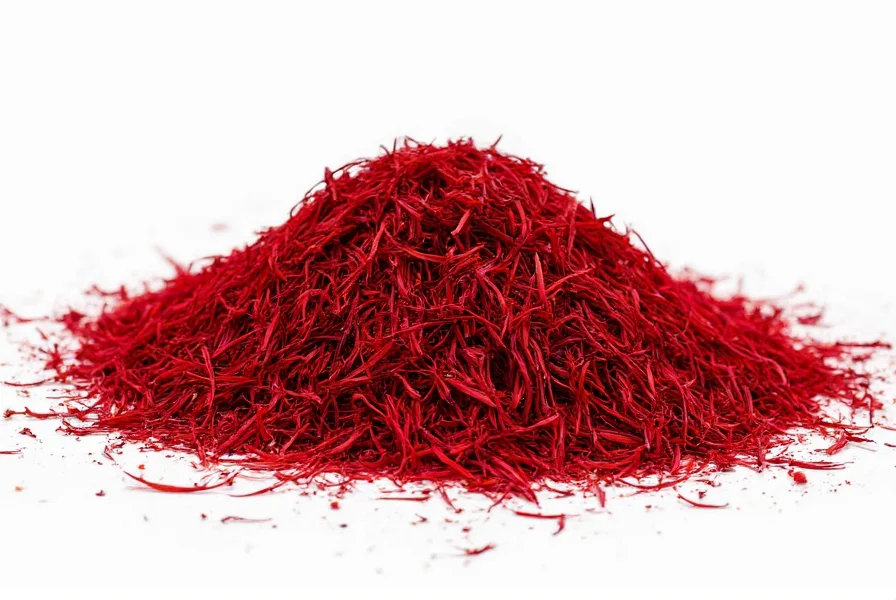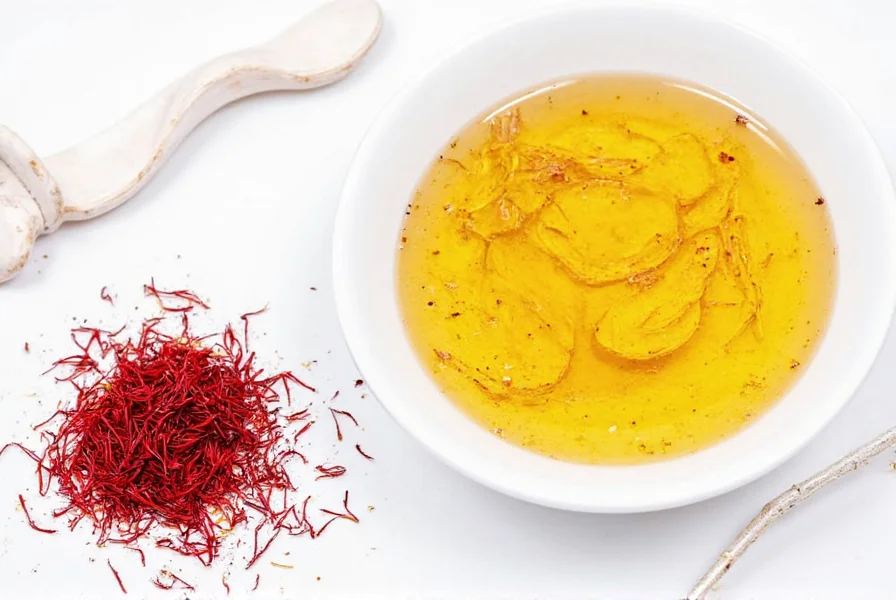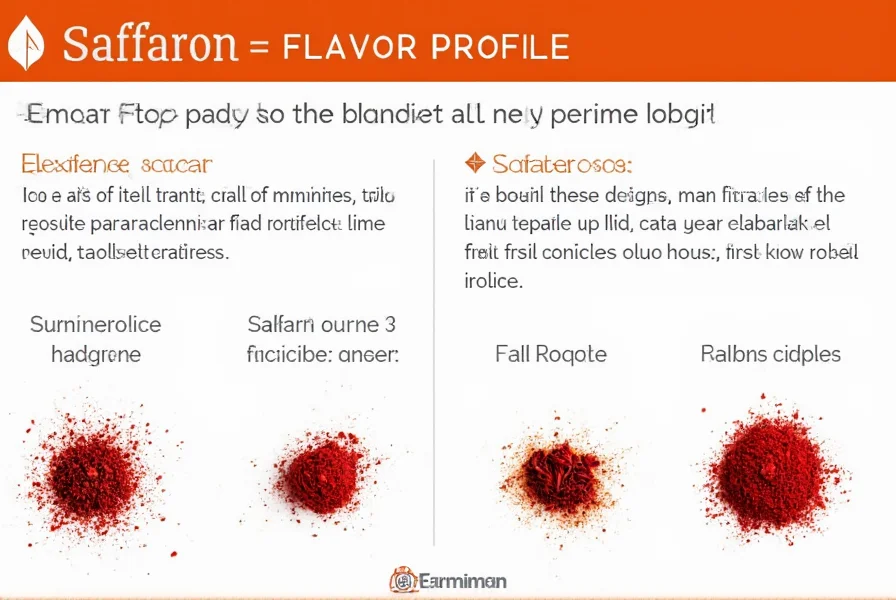Saffron, the world's most expensive spice by weight, offers a flavor experience unlike any other culinary ingredient. Understanding saffron flavor characteristics is essential for home cooks and professional chefs alike who want to harness this precious spice's full potential without wasting its considerable cost. The distinctive saffron flavor profile emerges from its complex chemical composition, which includes key compounds like crocin (responsible for color), picrocrocin (for flavor), and safranal (for aroma).
The Science Behind Saffron's Unique Flavor
When examining what does saffron taste like, we must consider its biochemical makeup. Picrocrocin, a bitter glucoside, breaks down into safranal when dried or heated, creating saffron's signature aroma. This transformation explains why proper preparation techniques significantly impact the final saffron flavor in dishes. High-quality saffron contains approximately 10-13% picrocrocin, which directly correlates to its flavor intensity.
The distinctive saffron flavor profile balances several elements:
| Flavor Component | Chemical Compound | Contribution to Flavor Profile |
|---|---|---|
| Floral Notes | Safranal | Provides the characteristic honey-like, floral aroma |
| Slight Bitterness | Picrocrocin | Creates the subtle bitter note that balances sweetness |
| Earthy Undertones | Various terpenes | Contributes to the hay-like, earthy background notes |
| Subtle Sweetness | Carotenoid derivatives | Provides a delicate honey-like sweetness |
How to Properly Experience Saffron Flavor
Many home cooks wonder why their saffron doesn't deliver the expected flavor. The answer often lies in improper preparation. To fully extract saffron flavor, follow these evidence-based techniques:
First, never add saffron threads directly to dry ingredients. The spice requires hydration to release its flavor compounds. The optimal method involves steeping crushed threads in warm liquid (not boiling) for 15-20 minutes. Water at 140-160°F (60-70°C) effectively extracts flavor without degrading delicate compounds. Some chefs prefer using milk or stock for specific dishes, but water remains the most versatile medium for saffron preparation techniques.
The amount of liquid matters too. Use approximately 2-3 tablespoons of liquid per 0.1 gram of saffron threads. This concentration allows proper extraction without diluting the precious flavor. When substituting saffron powder, use half the amount of threads as powder has already undergone some extraction.

Saffron in Culinary Applications
Understanding saffron flavor characteristics helps determine appropriate usage in various dishes. Traditional Spanish paella, Italian risotto alla Milanese, and Persian tahdig all showcase how saffron flavor complements specific ingredients. The spice works particularly well with:
- Rice dishes (absorbs flavor well without overpowering)
- Cream-based sauces (enhances richness while adding complexity)
- Seafood preparations (complements delicate ocean flavors)
- Sweet applications like ice cream and custards (showcases floral notes)
When considering how much saffron to use, remember that less is often more. For most dishes serving 4-6 people, 15-20 threads (approximately 0.1 gram) provides optimal flavor without bitterness. Excessive saffron creates an unpleasant medicinal taste that overwhelms other ingredients. The sweet spot for saffron flavor intensity occurs at concentrations between 15-30 parts per million in the final dish.
Common Saffron Flavor Mistakes
Many cooks make critical errors that compromise saffron flavor. Adding threads directly to boiling liquid destroys delicate flavor compounds through thermal degradation. Similarly, storing saffron improperly (in light or humidity) causes rapid flavor deterioration. High-quality saffron maintains its flavor profile for 2-3 years when stored in an airtight container away from light and moisture.
Another frequent mistake involves confusing saffron flavor with turmeric. While both provide golden color, saffron vs turmeric flavor differs dramatically. Turmeric offers earthy, slightly bitter notes without saffron's complex floral and honey characteristics. Substituting turmeric for saffron fundamentally changes a dish's flavor profile.

Quality Indicators for Optimal Flavor
The flavor intensity of saffron varies significantly based on quality. Premium saffron (often labeled Category I or ISO 3632 grade) delivers the most pronounced flavor profile with minimal bitterness. When selecting saffron, look for deep red threads with minimal yellow styles attached, as these indicate higher concentrations of flavor compounds.
Perform a simple water test to verify quality: place a few threads in warm water. Genuine saffron gradually releases a rich golden-yellow color while maintaining thread integrity for 15-20 minutes. Inferior products or substitutes often discolor immediately or dissolve completely, indicating poor quality that won't deliver authentic saffron flavor characteristics.
Frequently Asked Questions About Saffron Flavor
What does saffron taste like compared to other spices?
Saffron offers a unique flavor profile unlike any other spice. It combines subtle floral notes with a delicate honey-like sweetness and slight earthiness. Unlike turmeric (which is earthy and bitter) or paprika (which is sweet and smoky), saffron provides complex aromatic qualities without overwhelming heat or bitterness when used properly. Its flavor is more nuanced and delicate than most spices, requiring careful handling to appreciate its full complexity.
Why does my saffron taste bitter?
Bitter saffron flavor typically results from using too much spice or improper preparation. Saffron contains picrocrocin, which provides a pleasant subtle bitterness in small amounts but becomes unpleasant when overused. Using more than 0.15 grams per serving for 4-6 people often creates excessive bitterness. Additionally, adding saffron directly to boiling liquid or using insufficient steeping liquid can concentrate bitter compounds. Proper preparation with warm (not boiling) liquid and appropriate thread-to-liquid ratios prevents unwanted bitterness while preserving saffron's delicate flavor profile.
How can I maximize saffron flavor in my cooking?
To maximize saffron flavor, crush threads gently with a mortar and pestle before steeping in 2-3 tablespoons of warm liquid (140-160°F) for 15-20 minutes. This extraction method releases flavor compounds without thermal degradation. Add the infused liquid early in the cooking process for rice dishes to allow proper absorption, but later for delicate sauces to preserve volatile aromatics. Never add dry threads directly to recipes. For best results, use high-quality Category I saffron stored properly in an airtight container away from light, as freshness significantly impacts flavor intensity.
Does saffron flavor change when cooked?
Yes, saffron flavor evolves during cooking. The initial floral and honey notes become more integrated with other ingredients as volatile compounds like safranal dissipate. Prolonged high-heat cooking can diminish saffron's delicate flavor profile, which is why many chefs add the infused liquid toward the end of cooking for sauces or custards. In rice dishes like paella or risotto, saffron's flavor compounds gradually absorb into the grains, creating a more subtle but pervasive flavor throughout the dish. The optimal cooking time for saffron flavor depends on the dish type, with shorter cooking times preserving more pronounced aromatic qualities.











 浙公网安备
33010002000092号
浙公网安备
33010002000092号 浙B2-20120091-4
浙B2-20120091-4